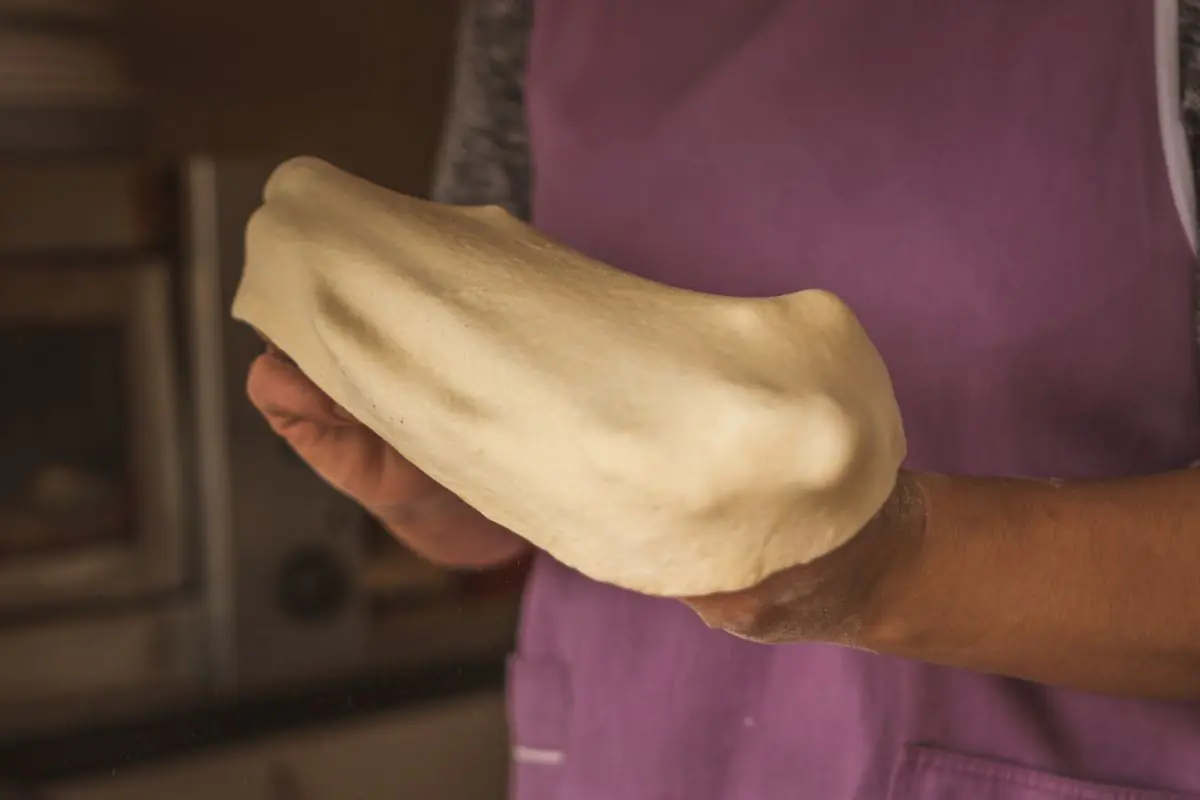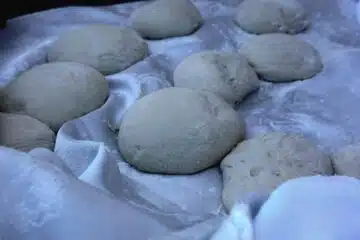To fix pizza dough that won’t stretch, let it rest to relax the gluten or knead it more to develop gluten elasticity. Ensure the dough is at room temperature for easier handling.
Crafting the perfect pizza often starts with mastering the dough, the very foundation of a good pie. Encountering dough that resists stretching can be a common frustration for pizza enthusiasts and home cooks alike. A stubborn dough can lead to a less-than-desirable base for your toppings, potentially ruining what could be a delicious meal.
Understanding the reasons behind this dough dilemma is crucial, as is knowing the simple tricks to remedy it. From insufficient kneading to gluten tightness, several factors can lead your pizza base astray. Releasing the dough’s tenacity with these easy fixes can quickly turn your pizza-making experience from a struggle into a success.
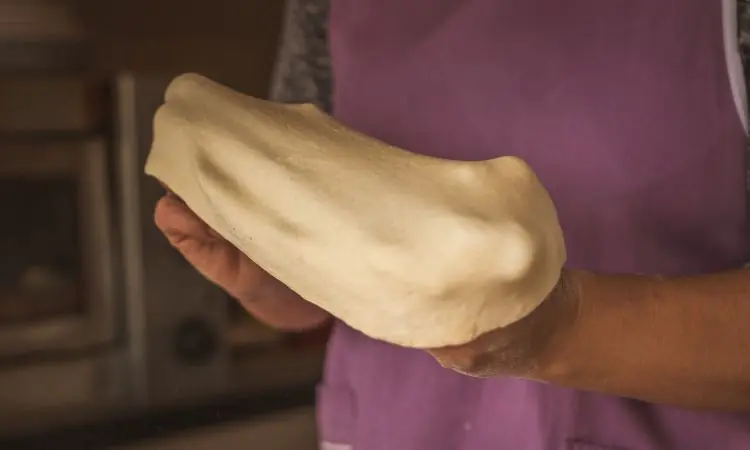
The Struggle With Unstretchable Pizza Dough
Making homemade pizza should feel like a fun journey. But sometimes, the dough will stay strong. It tears, springs back, and refuses to cooperate. This can turn pizza night into a frustrating puzzle. Don’t worry – with a few tweaks, your dough will be ready to stretch into the perfect base for those delicious toppings.
Common Reasons For Bunstretchable Dough/b
Let’s dive into the reasons behind unstretchable pizza dough.
- Gluten formation: Too little can make the dough weak. Too much can make it too tight.
- Dough temperature: Cold dough stretches harder than dough at room temperature.
- Hydration level: Low water content means less flexibility.
- Yeast activity: Inactive yeast can result in a dough that doesn’t rise, making it tough.
Understanding Bdough Elasticity/b
Why does dough elasticity matter? It’s simple. The elasticity gives pizza dough the ability to stretch without tearing. Gluten, the protein network in your dough, is the hero here. It needs the right balance of rest and kneading to become your ally in pizza making. Flour type, kneading time, and proper proofing all play crucial roles in this balancing act.
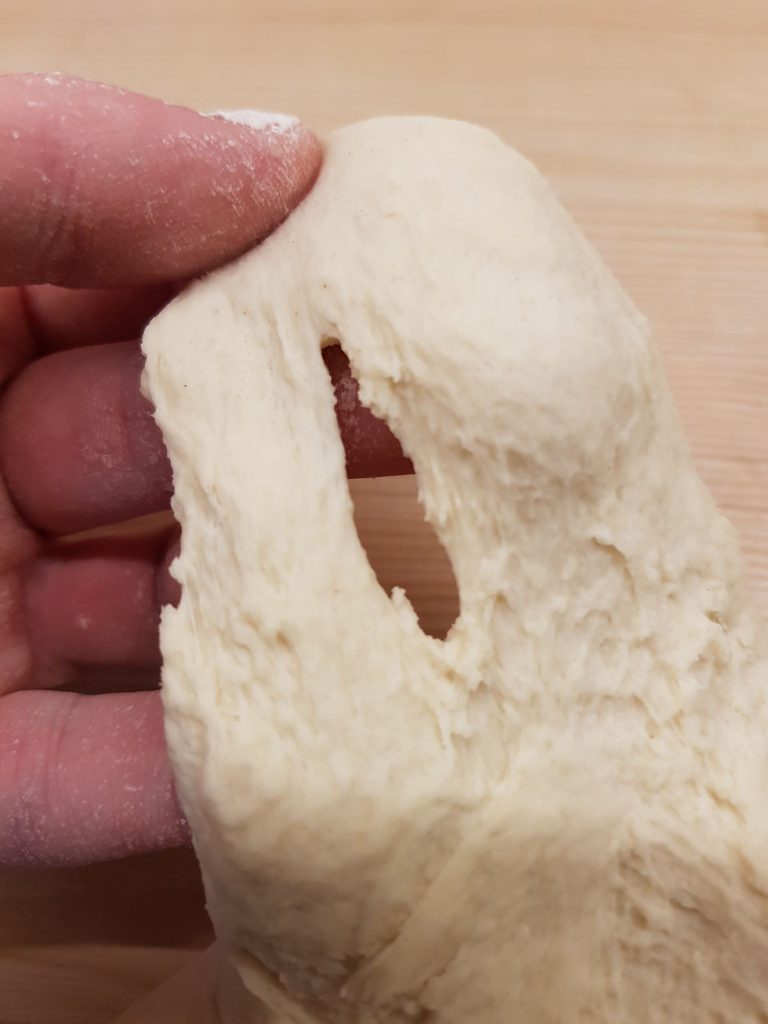
Credit: thepizzaheaven.com
Examining Your Dough Ingredients
Making perfect pizza dough feels like art and science combined. The right ingredients in the right proportions are key. A dough that won’t stretch is a common issue. It’s frustrating, but with a closer look at the core ingredients, this problem can turn into a distant memory.
The Role Of Gluten In Dough Stretch
Gluten, the protein found in wheat flour, is vital for dough elasticity. When water is added to flour, gluten proteins link to form a network. This gives dough its structure and stretchiness. Here’s what affects gluten formation:
- Type of flour: High-protein flours are best for stretchy dough.
- Water temperature: Warm water boosts gluten development.
- Kneading: Proper kneading aligns gluten strands for better stretch.
Effects Of Yeast And Fermentation On Dough
Yeast is not just for rising dough. It impacts how your dough stretches. Fermentation, the process where yeast breaks down sugars, produces gases that inflate the dough, increasing its flexibility. Consider these points:
- Yeast freshness: Use fresh yeast for reliable performance.
- Fermentation time: Longer fermentation equals more stretch.
- Temperature: Dough ferments better in a warm environment.
| Ingredient | Stretch Factor |
| Flour | High-protein for elasticity |
| Water | Warm to activate the gluten |
| Yeast | Fresh for best rise and stretch |
| Fermentation Time | Longer for more flexibility |
Temperature Matters: Warmth And Dough Flexibility
Have you ever struggled with pizza dough that won’t stretch? The secret lies in the temperature. Dough flexibility is deeply connected to warmth, as it affects the gluten network in your dough. Cold pizza dough is often stiff and snaps back when you try to stretch it, leaving you with a thick, uneven base instead of the perfect thin crust. Let’s dive into the optimal conditions for dough stretching and some handy tricks to warm up your dough.
Optimal Conditions For Dough Stretching
For that perfect stretch, the dough should be at a certain temperature. This means room temperature or slightly warmer is best. Here’s why:
- Warm dough expands more easily, giving that ideal stretch.
- Yeast performs better, creating the right texture and rise.
- The gluten relaxes, reducing elasticity and resistance.
| Too Cold | Just Right | Too Warm |
| Snaps Back | Perfect Stretch | Overspreads |
| Heavy Texture | Light and Airy | Too Yeasty |
| Slow Yeast | Active Yeast | Over fermented |
Tricks To Warm Up Your Dough
If your dough is too cold, don’t worry. You can still rescue it with these simple tricks:
- Place the dough in a warm environment. Think above the refrigerator or near a warm stove.
- Use a microwave-safe container and heat with short bursts of 10 seconds.
- Submerge the dough in a sealed bag in warm water. This provides even warmth without overdoing it.
Always check the dough after applying these methods. It should be pliable and supple to the touch. With the right temperature, stretching becomes a breeze, and you’re well on your way to the perfect pizza!
Technique Troubleshooting
Getting pizza dough to stretch right is an art. It’s frustrating when it snaps back. Let’s fix that with ‘Technique Troubleshooting.’ The perfect pizza base awaits.
Kneading: Finding The Sweet Spot
Proper kneading is key. It develops gluten, which gives dough stretch. But there’s a balance. Over-kneading makes the dough tough, and under-kneading tears it. Aim for smooth, pliable dough.
- Flour your surface.
- Push the dough away with the heel of your hand.
- Roll it back toward you.
- Turn it to 90 degrees.
- Repeat for about 8-10 minutes.
Do the windowpane test. Stretch a small piece thin. If it doesn’t tear and lets light through, it’s perfect.
The Right Way To Handle And Stretch Pizza Dough
To stretch the dough, start from the center and use your fingers to push outwards. The edges should be thicker than the middle. This forms the crust.
- Let the dough rest if it resists.
- Avoid a rolling pin, as it deflates bubbles.
- Use a gentle touch and patience.
Gravity helps, too. Carefully pick up the dough, use your knuckles to drape it, and turn it in the air.
Hydration Hacks For Stretchier Dough
Welcome to the ultimate guide on Hydration Hacks for Stretchier Dough. Are you tired of pizza dough that refuses to stretch? Fear not! The secret to that perfect pizza dough elasticity might lie in its hydration level. Here, we will dive into the art of manipulating water content to achieve the dream dough that’s both pliable and delightful to work with.
Wetter Is Better: Water-to-flour Ratio
A well-hydrated dough is key to a stretchy pizza base. The ideal water-to-flour ratio is crucial. Think of your dough as a playful slime that needs enough moisture to be flexible. To achieve this magic balance:
- Start with a basic ratio; typically, you want around 60-70% water per 100% flour.
- If the dough feels tough, add more water to the tablespoon.
- Use warm water to encourage gluten development.
- Measure precisely. Baking is a science, after all.
Adjusting Dough Consistency
Even with the right ratio, you may need to tweak the dough’s consistency:
| Condition | Action | Outcome |
| If the dough is too dry | Gently work in touch with more water | The dough becomes more pliable |
| If the dough is too sticky | Knead in a bit more flour | Improves dough handling |
Remember to let the dough rest after adjustments. This gives gluten time to relax.
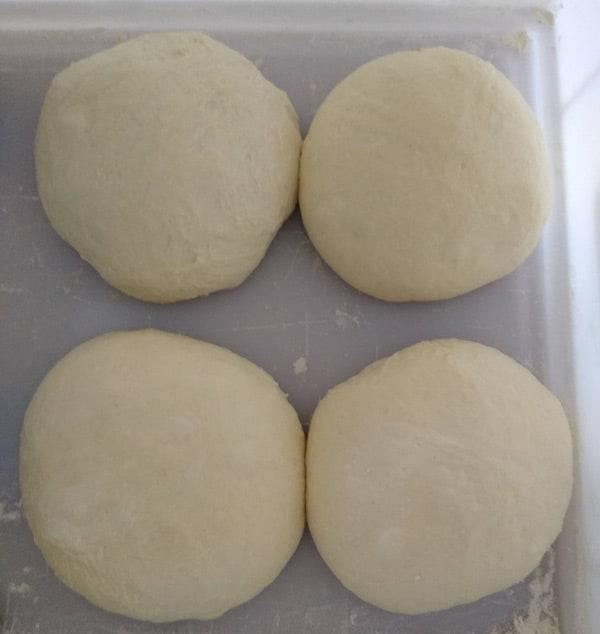
Credit: mypizzacorner.com
Rest And Relaxation: Giving Time To Your Dough
Do you need help with pizza dough that won’t stretch? Time might be your ally. Before tossing your dough in frustration, consider a crucial step you might have skipped: rest for your pizza dough. This isn’t just about giving yourself a break; it’s about understanding the science behind dough elasticity.
The Importance Of Resting Periods
A good night’s sleep revitalizes you, and rest dramatically benefits your pizza dough. Resting allows the dough to cool down after the kneading workout. During this time, the dough becomes more pliable and easier to shape. This crucial break is necessary for the dough to resist your attempts to stretch it, resulting in tears and uneven bases.
- Rest after kneading: Let the dough sit for at least 20 minutes.
- Second rest: After dividing the dough, another short rest helps.
- Room temperature: Dough relaxes better at a warm room temperature.
Gluten Networks And Dough Conditioning
What makes the dough stretchy? Gluten networks. When flour mixes with water, gluten proteins link up to form a network. This network needs time to develop. During rest, gluten strands align and strengthen, giving the dough its stretchy quality.
Conditioning your dough is like training muscles. A well-rested dough will respond much better, stretching without snapping back. Think of resting your dough as a conditioning session that results in a healthier, more cooperative dough.
| Resting Time | Benefit to Dough |
| 20-30 minutes | Relaxes gluten, better handling |
| Overnight | Develops flavor, optimal gluten formation |
Remember, patience is key. Allow the dough time to transform from a stubborn mass into a stretchy canvas for your toppings.
Troubleshooting Dough Texture On The Spot
Are you struggling with pizza dough that refuses to stretch? Wait to toss it out. Learning quick fixes for tightening up and when starting over makes sense can save your meal—and your effort.
Quick Fixes For Too-tight Dough
If the dough feels like a rubber band, relax it immediately. Here are a few tips:
- Warmth is key—let the dough rest in a warm spot for 30 minutes.
- Moisture can help—dampen your hands and knead gently.
- Oil works wonders—coat the dough lightly and stretch again.
Remember to use a gentle touch to avoid tearing the dough.
When To Start Over: The Point Of No Return
Sometimes, dough defies all effort. Signs to start fresh:
- Dry or crumbly dough can’t develop the right texture.
- Certain ingredients, like too much flour, ruin elasticity.
- A dough that snaps back constantly needs a redo.
Measure ingredients and follow the recipe closely for better results next time.
Prevention For Next Time: Best Practices
Stretched-out dough often leads to perfect pizza, but what if it doesn’t stretch? No need to worry! Understanding the best practices for next time is crucial. This section covers two critical aspects to prevent dough dilemmas: recipe precision and the magic of autolysis.
Recipe Precision And Consistency
To create a dough that stretches, precise measurements are key. Follow these steps:
- Measure ingredients accurately. Use scales for flour and water.
- Follow the recipe closely. Every ingredient matters.
- Keep the temperature consistent. Yeast thrives at a specific heat. Use warm water, not hot.
- Record your process. Note any tweaks for next time.
Consistency in each batch means less trouble with stretching.
The Magic Of Autolysis
Autolysis, or pre-resting, can transform your dough. Here’s how to do it:
- Mix flour and water. Combine until no dry flour remains.
- Rest the mix. Wait 20-30 minutes before adding other ingredients.
This simple pause allows gluten to develop naturally. It results in a more elastic dough. Be patient.
Frequently Asked Questions
How Do You Stretch Pizza Dough That Won’t Stretch?
Let the dough rest at room temperature to relax the gluten. Gently flatten and stretch by hand, avoiding rolling pins. If the dough is sticky, use oil on your hands. Be patient, stretching slowly to prevent tearing. Warm environments can make the dough more pliable.
Why Does My Pizza Dough Keep Springing Back?
Your pizza dough keeps springing back because it’s either overworked or hasn’t rested enough, causing the gluten to tighten. Allow the dough to rest and relax the gluten before shaping.
Why Is My Pizza Dough Not Spreading?
Your pizza dough might not spread due to insufficient kneading, low temperature, over fermentation, or a high gluten flour that’s too elastic. Let it rest to improve extensibility.
Why Won’t My Pizza Dough Expand?
Your pizza dough might not expand due to inactive yeast, low temperature, insufficient proofing time, or improper kneading techniques. Always check yeast activity and follow the recipe closely for the best results.
Conclusion
Tackling stubborn pizza dough doesn’t have to sour your baking experience. Remember, warmth, hydration, rest, and technique are your allies in achieving that perfect stretch. Keep practicing with these tips, and soon, your dough will be as pliable as your pizza-making aspirations.
Happy baking, and enjoy your delicious creations!

As the author of the “Ultimate Pizza Guide: Recipes, Tips & Secrets Revealed,” I’m dedicated to sharing my love for pizza and empowering others to create delicious homemade pizzas with ease. Join me on a journey to uncover the secrets to perfecting your pizza game!
